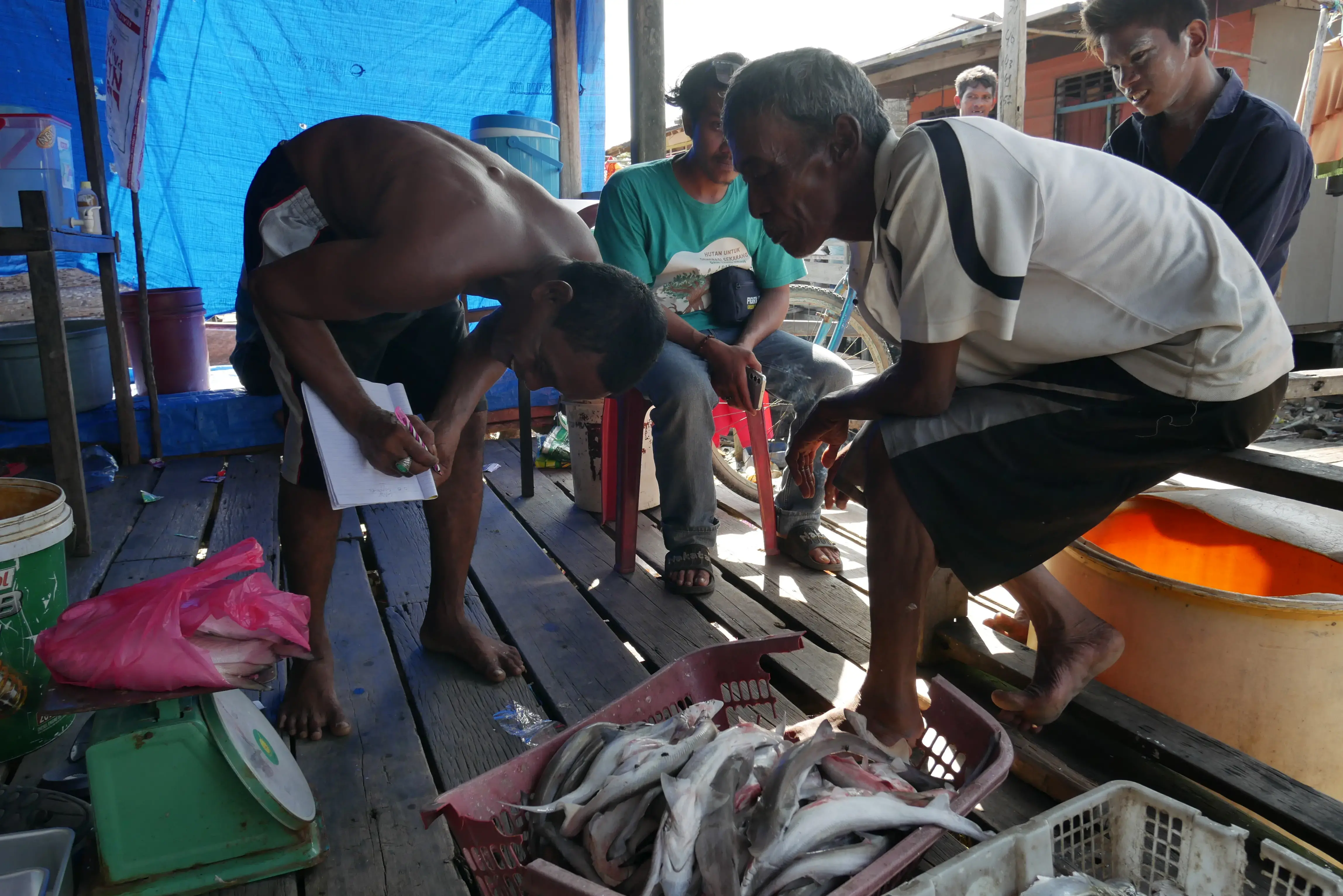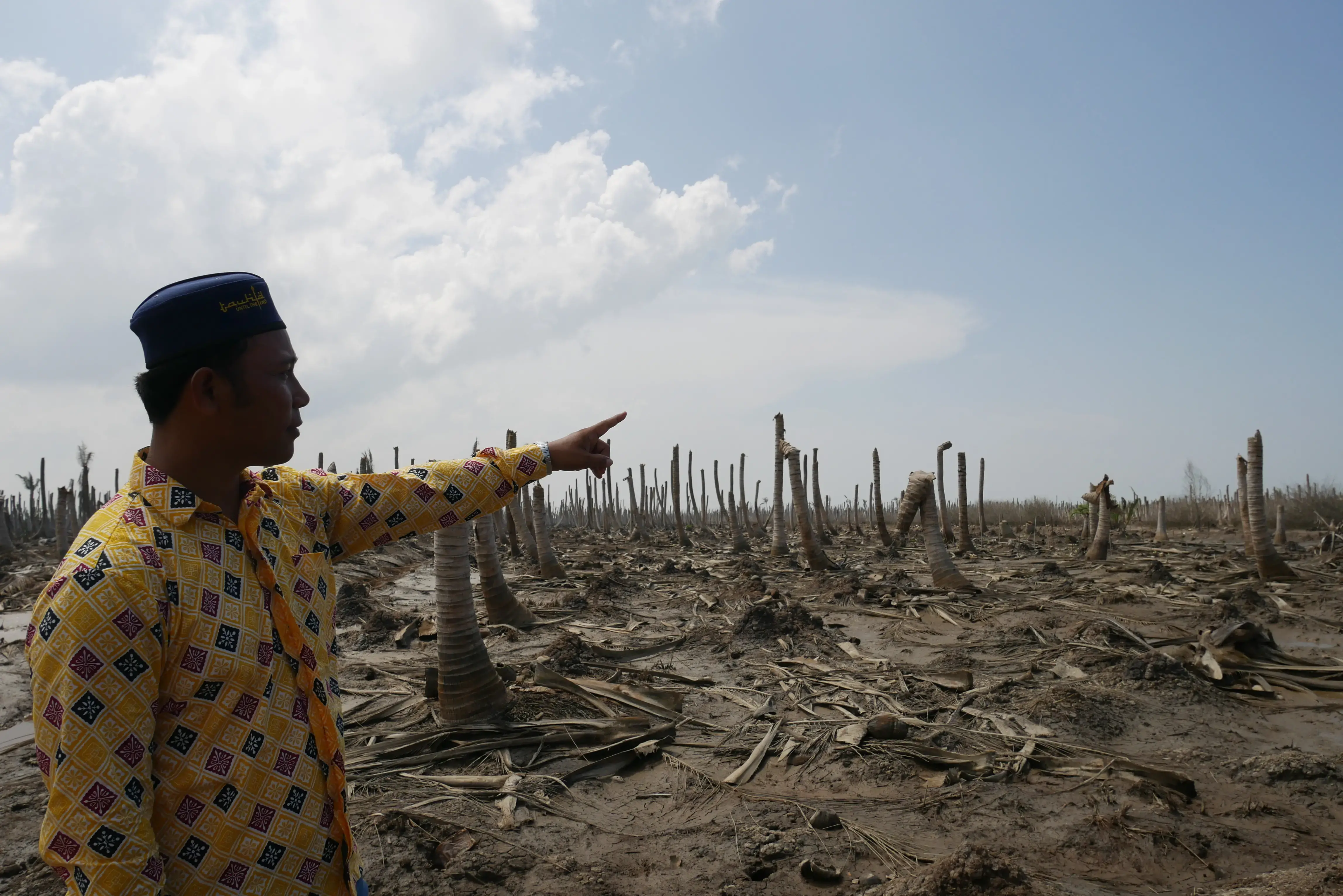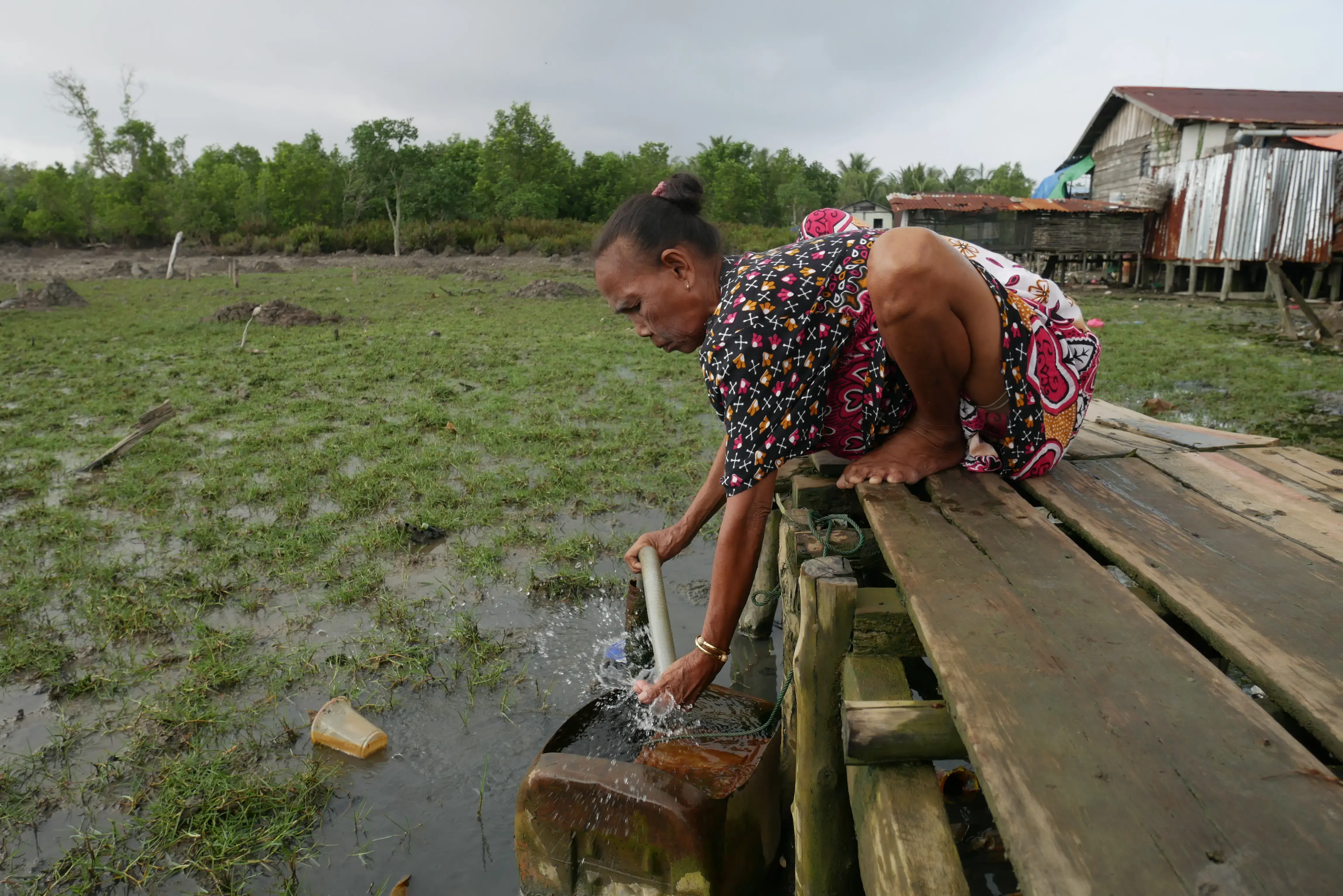
First they lost their homes, and then their livelihoods and clean water. Villagers and officials are scrambling to save Indragiri Hilir from coastal erosion before the encroaching seawater destroys their lives.
Abdul Gani used to sail to a nearby mangrove forest in Kuala Selat village in Indragiri Hilir, Riau to catch fish, especially when the water was deep because shrimps often lay their eggs among the mangrove roots.
But when the mangrove disappeared from the village, it was almost impossible to fish near the coast. The forest, which had been a breeding ground for marine animals, was no longer there.
Now, Abdul and other traditional fisherfolk must go further afield to catch fish. “The closest we go to is 3.2 kilometers from the land. Sometimes, we go up to 4.8 km [out],” he said.
Kuala Selat has suffered from coastal erosion in the past few decades as the village loses its rows of mangroves, the natural protection against sea waves that have been gnawing away the land. The abrasion has taken its toll on the villagers: they lose their home and later their source of livelihood.

As a nonprofit journalism organization, we depend on your support to fund journalism covering underreported issues around the world. Donate any amount today to become a Pulitzer Center Champion and receive exclusive benefits!
The Indragiri Hilir regency had around 112,500 hectares of mangroves in 1990, but the coastal forest had depleted to just 95,600 ha by 2019, according to Riau-based Jikalahari environmental group.
The mangrove deforestation has impacted the fishermen’s income. On a good day, Abdul can sell around 20 kilograms of fish for Rp 200,000 (US$12.83). However, this does not happen every day, especially as the weather gets more unpredictable, affecting their catches.
Fisherfolk only go to the ocean up to three times a week. But during the north and southeast monsoon seasons, the sea can be rough, thus preventing them from sailing and looking for fish for weeks. The Kuala Selat fishermen are often forced to stay home during these seasons or look for other jobs, including as laborers.
But not Abdul, who is already 55 years old. He does not have the same energy as the younger fishermen, so he only depends on income from selling the fish he catches to meet daily needs.

The same goes for Keti, 63, a member of the Duano sea tribe which was among the first residents of Kuala Selat. When he was young, he could walk among the mangroves along the coast to find nests of shrimps and crabs.
“When we still had the mangroves, I could catch up to 1 tonne of shrimp and fish,” he said. “Now, the situation is really different.”
They come from within
The loss of mangroves not only impacts fisherfolk, but also people who plant and harvest coconuts in the village.
Since 2016, up to 35 meters of land has eroded every year as the beach lost a large section of its mangrove forest, a natural protection against the sea. The abrasion has triggered seawater intrusion which destroys the coconut plantations in Kuala Selat.
The coconut tree is a land tree that can only consume freshwater. The trees die when the saltwater seeps into the ground and replaces the fresh, choking them from their only source of water.
The village had around 2,000 ha of coconut plantations, equivalent to 2,800 soccer fields, managed by 131 families. These were the source of livelihood for more than half of the villagers.
One of the coconut growers in Kuala Selat, Imam Taufik, explained that a 3.5-ha coconut plantation could consist of 750 trees, producing 15,000 coconuts every three months. “One farmer can get more than Rp 20 million during the harvest period,” said the former Kuala Selat village head.

But many farmers have lost their main source of livelihood now. Iman himself lost all his six plantations, with only dead coconut trees still standing.
Riau has the largest mangrove forest buffer in Sumatra, covering more than 220,000 ha of the province, according to data from the Peatland and Mangrove Restoration Agency (BRGM). The agency also found that around 3,700 ha of the mangrove forest was made up of rare variants only found in the region.
Experts deem the impact of mangrove deforestation in Kuala Selat is more complex than in other areas because the village suffered from the massive coastal erosion and seawater intrusion at the same time.
According to a calculation by the BRGM, average seawater intrusion in Indragiri Hilir today reaches 1.5 km from the coast. However, it is projected that the saltwater could seep even further inland, as far as 4 km if there are no efforts to stop the erosion and intrusion.
A 4-km seawater intrusion would kill all the remaining coconut plantations in the village and trigger a loss of income for thousands of coastal people, said Musyafa Ahmad, the agency mangrove sub-working group head.
Officials were also concerned about the wider environmental impact of the intrusion. “The intrusion can disrupt the balance of the ecosystem further and pollute the groundwater, making it more difficult for the villagers to get clean water,” Musyafa said.
Kuala Selat villagers now depend on the rain to get clean water. Each house has at least two barrel drums to collect the rainwater. Water dug from the ground is no longer suitable for washing, let alone drinking.
“There are five wells across the village, but none of them provide healthy water. People don’t want to use them,” said Dahniar, a 50-year-old Kuala Selat resident.
Restoring lost land
The BRGM, collaborating with local administrations and researchers, is working to find solutions to overcome mangrove deforestation on the coast of Riau and mitigate its impacts.
To solve the clean water crisis, the BRGM recommends the Riau administration to build rainwater reservoirs in several places to balance the saltwater intrusion.
The agency itself is focusing on slowing down the erosion and restoring the lost land. Among the measures tried in the area is to build breakwaters on coastal areas.
The structure would protect the land from sea waves that erode the land and break down the mangrove trees. “Once the breakwaters are built, sediment will build up,” said Musyafa, adding that the sediments were a suitable medium for planting and growing mangroves.
Samsuri, one of the Duano tribe elders, and other Kuala Selat residents welcomed the approach: “If you don’t have [the breakwaters], it’s useless to plant mangroves.”

The limited budget, however, is a challenge for the mangrove restoration plan. So far, the construction of wave-breaking structures could not be funded by the Finance Ministry. The officials then tapped money provided under the Mangroves for Coastal Resilience (M4CR) established by the government in cooperation with the World Bank.
Under the scheme, Indonesia can get $19 million in grants and $400 million in loans that can be used on the policy formulation and ground rehabilitation of mangroves across the archipelagic country. The government aims to rehabilitate up to 600,000 ha of mangroves by 2024.
A number of studies have shown the potential of breakwater structures to improve a coastal area’s resilience. Singapore, for example, has used the structure to save Tekong and Kranji Islands from worsening erosion due to climate-induced sea level rise, as reported by The Strait Times.
In Riau, the BRGM will try breakwaters in Bengkalis, an island located not far from the provincial capital of Pekanbaru that has been suffering from massive coastal erosion in the past decades. “If this is successful,” Musyafa said, “we will build them along in other coastal areas in Riau.”





